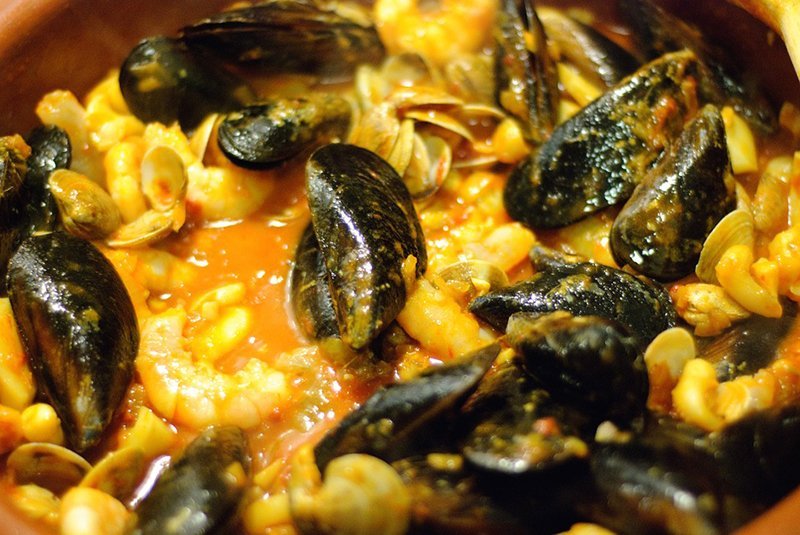Repurposing seafood shells is helping to save Australia’s decimated shellfish reefs

THE GREAT BARRIER REEF has become a potent symbol for threatened reef environments. Yet the lesser-known shellfish reefs of Victoria and South Australia have suffered an even greater level of impact, with up to 99 per cent of these systems now destroyed due to a long history of dredge fishing.
In an effort to restore one of these ecosystems, a team of scientists, fishers and conservationists has brought an innovative solution to the table. They are using mollusc shells recycled from our dinner plates to re-establish mussel and oyster reefs at Port Phillip Bay, in southern Victoria.
In collaboration with the Victorian Fisheries Authority and Albert Park Yachting and Angling Club, The Nature Conservancy (TNC) has for the past two years been collecting oyster, mussel and scallop shells from restaurants and seafood suppliers in Geelong, south-west of Melbourne. They have so far collected more than 420cu.m of shells that would have otherwise ended up in landfill.
See more: A day in the life of the Great Barrier Reef
In November, they began spreading shells and limestone rubble across the sea floor at two sites in the bay to form bases for new Angasi oyster (Ostrea angasi) reefs. First, however, the shells were stored at a site on Bellarine Peninsula, where they were left to cure through sun and wind exposure for six months to ensure any diseases they might have been carrying were killed off. In March, the team will spread shells at a second site in the bay to form the base of a blue mussel (Mytilus edulis) reef.
The science behind the approach is simple. Shellfish larvae need a solid substrate on which to grow, so in areas where suitable reef habitats have been depleted, layers of recycled shells can be arranged on the sea floor to provide new hard surfaces that will support developing larvae.
Most of Port Phillip Bay’s naturally occurring shellfish have died off, but researchers hope placing the shells on the sea floor during the natural oyster and mussel spawning seasons will encourage remnant populations to colonise the new reefs. To ensure the success of these sites, the team is also introducing more than 10 tonnes of live blue mussels supplied by aquaculture farmers and some 350,000 oyster spat grown by the Victorian Shellfish Hatchery.

Victorian restaurants are being offered an alternative to discarding shells from seafood dishes. (Image Credit: Maxpixel)
“Although we have a low population base in the bay, we want to tap into the potential of natural recruitment,” says the project’s manager and TNC’s marine restoration coordinator, Simon Branigan. He says Port Phillip Bay’s scheme was inspired by a similar USA initiative, where recycled shells have been used to restore 7ha of a Great Bay Estuary reef, in New Hampshire. Since 2009, oyster numbers there have risen by more than 3.5 million.
The Port Phillip Bay shell-recycling initiative is part of a large-scale reef restoration project that will see at least 10 reefs – covering about 1000sq.m – newly constructed or re-established. The first stage of the project was completed in April 2017. It saw teams
use limestone, rather than shells, to restore two oyster reefs: Wilson Spit Reef, at Geelong Arm, and Margaret’s Reef, at Hobsons Bay.
See more: The low-carbon workplace
“We expect that after about three years, the shellfish reefs will stabilise and start to grow,” Simon says. He hopes the project will not only increase the bay’s mussel and oyster populations, but also benefit other species. The new reefs will provide habitat and prey for an array of marine life and help improve water quality in the bay, because shellfish remove excess nitrogen and inorganic materials through filtration.
The project’s benefits extend beyond the waters of the bay. It provides local people with employment – Geelong Disabled People’s Industries supply a workforce to collect shells and transport them to the curing site. It also offers businesses a sustainable way of dealing with shellfish waste.
“We have reduced our waste by 2500kg in two years, solely through recycling mussel shells,” says Alex Smith from Little Creatures, one of the restaurants donating shells. “The fact we can do something with them rather than just throw them away is fantastic.”
Simon and his team hope to mirror their success at Port Phillip Bay with similar projects at SA’s Gulf St Vincent and Western Australia’s Oyster Harbour.
READ MORE:




